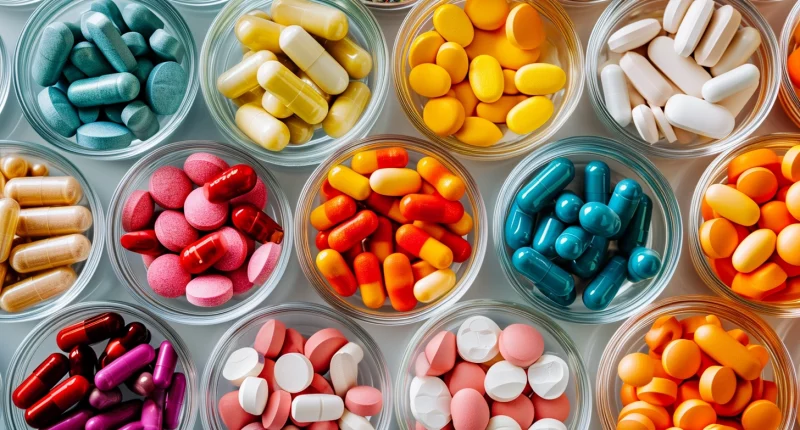Cholelithiasis
What is cholelithiasis?
Cholelithiasis is a chronic disease accompanied by the formation of hard concretions in the gallbladder and biliary tract. The main factor of development is aggravated heredity. In addition, a major role in the formation of pathology is played by the features of nutrition, in particular, the use of large amounts of simple carbohydrates (sweets, candy, flour products, etc.).
General information
In Europe, the incidence rate is quite high and is up to 10-15%. For comparison, in Asian countries this indicator does not exceed 5%.
The pathology is asymptomatic for a long time. For the first time it can be manifested by an attack of biliary colic, which is characterized by marked pain in the right subcostal area, nausea, vomiting and other complaints. Sometimes acute inflammation of the gallbladder develops against the background of cholelithiasis.
Types of cholelithiasis
Classification of cholelithiasis implies not only the allocation of different forms of the pathology itself, but also concretions, taking into account the specifics of location, composition and size.
Depending on the localization of stone deposits, there are 3 main types of gallstone disease:
- Cholecystolithiasis, when the concretions are located directly in the gallbladder;
- Choledocholithiasis, in which stones are concentrated in the common bile duct;
- Intrahepatic cholelithiasis, when the concrements are localized in the bile ducts located inside the liver.
The direct mechanism of stone formation is the initial thickening of bile. They can have different composition, and depending on this parameter, homogeneous concrements are distinguished:
- cholesterol, which can grow to large sizes over time;
- pigmented, consisting mainly of bilirubin compounds, may be black or brown in color;
- calcareous, which is extremely rare.
In addition, three types of stones are distinguished according to their size:
- large – over 2 centimeters in diameter;
- small – less than 1 centimeter;
- medium – 1 to 2 centimeters.
Small and medium-sized stones of mixed type are most common, as well as homogeneous cholesterol formations.
Symptoms of cholelithiasis
Cholelithiasis can be hidden for a long time, without any clinical signs. Bright symptomatology is detected when the bile ducts are blocked by a concrement (biliary colic) or when inflammation develops (acute cholecystitis).
Biliary colic is one of the most characteristic symptoms of gallstone disease in men and women of different ages. It appears when a stone moves, when it obstructs the exit from the gallbladder or ducts. Against this background, intraluminal pressure increases and there is a pronounced pain syndrome. Its distinguishing features are:
- appearance 1-1.5 hours after eating a fatty meal or an episode of excessive overeating, sometimes jolting driving and torso tilts act as provocateurs;
- rapid increase in pain in a short period of time;
- the pain is constant and radiating;
- varying attack duration from a couple minutes to several hours;
- localization of pain in the epigastrium and in the subcostal area on the right, and there may be irradiation to the right arm, between the shoulder blades and neck on the right;
- associated symptoms: nausea and vomiting without relief, decreased or increased heart rate, fluctuations in blood pressure, slight increase in body temperature, false urges to defecate or bowel bloating;
- pain control is sudden on its own or as a result of the administration of antispasmodics.
It is also worth paying attention to “nocturnal” complaints. Scientists from Denmark have established that pain in the right subcostal area, which appears several hours after falling asleep, is quite specific for biliary tract pathology. It may not be a true biliary colic, but it requires early referral to a gastroenterologist or hepatologist.
Causes of cholelithiasis
Aggravated heredity plays a primary role in the development of the disease. In addition, there are a number of factors that can become both the main cause of cholelithiasis and a prerequisite in combination with other circumstances. These include:
- age: the highest peak of incidence is registered within 40-69 years of age;
- female gender – it is believed that estrogens can thicken bile, and thus increase the likelihood of concrement formation, but after the onset of menopause, the chance of pathology development in men and women is almost the same;
- pregnancy, as hormonal changes and compression of bile ducts by the growing uterus increase the risk of bile thickening and formation of concrements (sometimes after childbirth they can dissolve on their own);
- menopausal hormone therapy in women, since externally administered estrogens affect the physicochemical properties of bile;
- obesity and elevated triglycerides in the blood;
- diabetes and metabolic syndrome;
- cirrhosis of the liver;
- rapid weight loss, including as a result of bariatric surgery;
- sedentary lifestyle.
Diagnosis of cholelithiasis
Examination begins with a thorough analysis of complaints and the results of objective examination. Cholelithiasis may have much in common with myocardial infarction, pyelonephritis and a number of other diseases of the digestive system, so to establish an accurate diagnosis, the doctor makes an individual program of diagnostic methods, which may include:
- urinalysis and blood test;
- biochemical blood test;
- ultrasound scan of the abdominal cavity;
- abdominal and chest X-rays;
- endoscopic retrograde cholangiography (a research probe is inserted through the mouth and brought to the duodenal papilla).
In difficult diagnostic cases, computed tomography and magnetic resonance cholangiopancreatography may be used. If the patient has other chronic diseases, specialized specialists such as endocrinologists, gynecologists, cardiologists, etc. are involved in consultations.
Treatment of cholelithiasis
The choice of treatment method for cholelithiasis depends on the severity of clinical symptoms and the stage of pathology. In asymptomatic course, only dynamic observation, organization of proper lifestyle and nutrition is required. In the presence of symptoms, conservative or surgical treatment may be chosen.
Lifestyle and diet
Correction involves following certain rules that will help control GI and reduce the likelihood of unpleasant symptoms. It is recommended to consume moderately caloric food, eat small portions, but often (5-6 times a day in 2-3 hours).
The diet should be structured as follows:
- increase dietary fiber through vegetables, greens, bran, wild rice, etc.;
- reduce the amount of fat – chicken, turkey, rabbit and veal, low-fat dairy products and low-fat fish should be chosen from meat;
- give up smoked meats, fried foods, flour products and sweets;
- reduce salt and spicy food intake.
Conservative treatment
Conservative therapy consists in drug dissolution of gallstones. It is effective only if the concrements are cholesterol stones (with pigmented stones the start of litholytic therapy is contraindicated).
Conservative treatment is also given as part of emergency treatment to manage an attack of hepatic colic. The following medicines may be prescribed:
- antispasmodics;
- drugs that block choline receptors (relax the smooth muscles of the bladder and ducts);
- analgesics;
- antiemetics and potions that normalize the motility of the digestive tract.
It is important to understand that only the attending physician can select the appropriate medication, taking into account all possible risks and indications. It is categorically not recommended to use any drugs in the order of self-treatment for GI and any other diseases of the digestive tract.
Surgical treatment of gallstone disease
In most cases of cholelithiasis with vivid clinical symptoms, cholecystectomy, an operation to remove the gallbladder, is recommended. It can be performed both through a classic abdominal incision and laparoscopically (through 3 tiny punctures in the anterior abdominal wall).
Laparoscopic cholecystectomy is characterized by a number of advantages:
- good cosmetic result;
- quick recovery;
- minimal complication rate;
- minimal tissue traumatization;
- insignificant pain syndrome in the postoperative period.
However, in some cases, laparoscopic surgery for gallbladder removal is not possible due to existing complications, abnormal structure of the organ, etc. In such cases, surgeons resort to standard laparotomy.
All these treatment options are available in more than 600 hospitals worldwide (https://doctor.global/results/diseases/cholelithiasis). For example, laparoscopic cholecystectomy can be performed in 23 clinics across Turkey for an approximate price of $3.5 K (https://doctor.global/results/asia/turkey/all-cities/all-specializations/procedures/laparoscopic-cholecystectomy).
Prevention of cholelithiasis
To reduce the risks of developing cholelithiasis, experts recommend adhering to a number of simple but effective rules. They include:
- sensible diet: avoiding overeating, excessively fatty, calorie-dense foods, overly salty or sweet foods, carbonated sweet water, and other potentially harmful ingredients;
- adherence to a fractional diet;
- filling the daily diet with fresh vegetables, fruits, berries, as well as lean varieties of meat, fish and poultry, cereal porridge;
- daily physical activity as part of the fight against hypodynamia and obesity;
- weight management;
Rehabilitation
The length of the recovery period after GI bleeding depends on many factors, which include:
- the patient’s age, gender, and general health characteristics;
- stage of the disease;
- the type and size of the concretions;
- The presence of other chronic pathologies in the patient;
- the type of treatment given.
Rehabilitation after laparoscopic cholecystectomy is also quite fast. In the hospital, the patient stays from 1 to 3 days. During this time, mild analgesics are prescribed, and antibiotic prophylaxis or antibiotic treatment is carried out (depending on the infection risk). Early activation is recommended: you can and should get out of bed soon after transfer to the general ward.
It is very important during the rehabilitation period to carefully follow all doctor’s orders, adhere to a strict diet and never take any medications without the instructions of the treating specialist.


